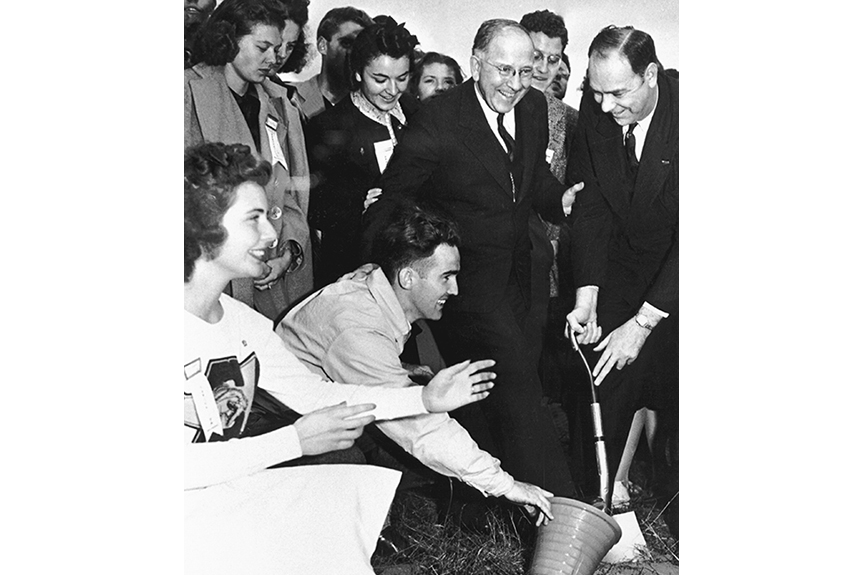Voices from the past still speak inside the J. Paul Leonard Library
SIXTY YEARS AGO, SF State was looking to the future. It had a brand-new campus a stone’s throw from Lake Merced and a president, J. Paul Leonard, who was overseeing its transformation from small teachers’ college to major university.
In looking ahead, ironically, Leonard and his colleagues would help the rest of us look back. SF State issued a new mandate: Each department was to begin compiling archival material. With time, what started as a potpourri of meeting minutes, course descriptions and yearbooks grew to include rare art, medieval manuscripts, ancient vases, curios from San Francisco and University history and even a 2,500-year-old sarcophagus. And it can all be found in the J. Paul Leonard Library.
“We’re here for the University and the community, but we’re kind of a hidden treasure,” says Meredith Eliassen, the senior assistant librarian/lecturer who curates the University archives, historic collections and the Frank V. de Bellis Collection.
Headquartered on the library’s fourth floor, the special collections are managed by a team of University librarians and archivists. Anyone can make an appointment to view archival material. The fourth floor research room features display cases, a gallery and a secure, climate-controlled area called “The Vault” (always kept around 65 degrees and 45 percent humidity to protect the delicate pieces within), but Eliassen estimates that as much as 80 percent of the collections she works with are stored in the building’s massive, automated Library Retrieval System.
Originally small and insular, the special collections took a huge leap forward in the early 1960s when an avid music lover named Frank V. de Bellis gave SF State the bulk of his collection. A native of Italy, de Bellis had amassed thousands of rare phonograph recordings, librettos, handwritten scores and musical instruments that charted the development of the Italian music industry over hundreds of years. de Bellis was interested in the development of Italian culture, as well: His collection included Italian documents dating from the Renaissance (including a 1474 bull – an official decree bearing the seal of Pope Sixtus IV). Working with Adreina Becker-Colonna, a former classics professor, he added an array of ancient Etruscan, Greek and Roman artifacts (the sarcophagus among them).
Opened to the public in 1964, the Frank V. de Bellis Collection was only the first special collection to be donated to the California State University system. In 1982, Educator Marguerite Archer gave SF State approximately 3,500 vintage American children’s books, toys and games. Other collections include the San Francisco Bay Area Television Archive, which holds more than 4,000 hours of local news footage and documentaries; the Labor Archives and Research Center, which focuses on Bay Area union history; and the San Francisco State College Strike Collection, which documents the protests that dominated campus life in 1968 and 1969.
Among these collections are hundreds of one-of-a-kind items. The de Bellis collection, for example, includes recordings of the 19th century Italian singers who originated some of the greatest roles in all of opera. “We know for some of them we have the only copy in the world,” says Eliassen. “To have access to that sound, to hear how these singers performed these roles, is a huge research resource.”
It’s a resource SF State is sharing with the world. Select material from the collections is being posted online (digital-collections.library.sfsu.edu). And Eliassen is on the hunt for funding support so that the most valuable recordings in the de Bellis Collection – what she calls “the rarest of the rare” – can be digitized and made available, as well.
“These are voices from the past,” Eliassen says. “It’s our job to make sure they can be heard again.”
By STEVE HOCKENSMITH /// Artifact Photos by PAUL ASPER
Photos 1 and 2, Courtesy of UNIVERSITY ARCHIVES










